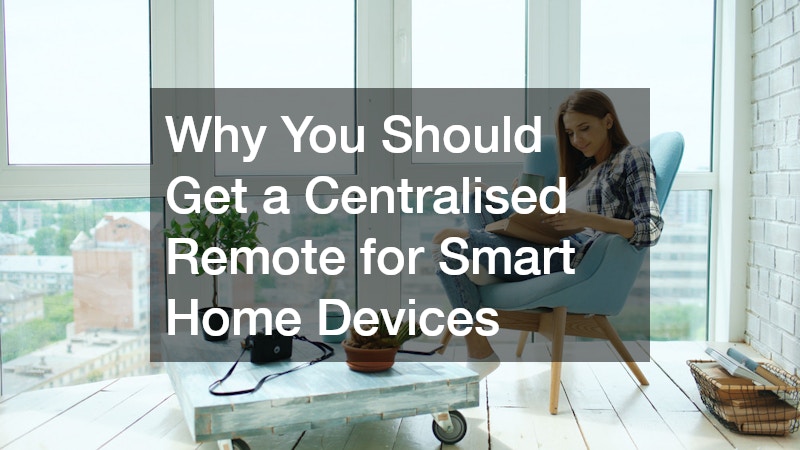
The rise of smart home technology has transformed how we live, offering convenience, energy efficiency, and increased control over everyday tasks. With the variety of smart devices available—thermostats, lighting systems, security cameras, speakers, and more—managing all these gadgets can become overwhelming. This is where a centralised remote for smart home devices comes into play, allowing users to control multiple smart home systems from one device. Here are the key reasons why you should consider investing in a centralised remote for your smart home setup.
1. Convenience and Simplified Control
One of the most significant benefits of having a centralised remote for smart home devices is the convenience it offers. Instead of managing multiple apps for each smart device, a centralised remote consolidates all control functions into one easy-to-use interface. Whether you’re adjusting your thermostat, dimming the lights, or turning on your home entertainment system, you can perform all these actions from a single device.
This seamless control reduces the hassle of navigating multiple platforms and eliminates the need to remember which app controls which device. For example, instead of opening three different apps to control your lights, speakers, and security system, a centralised remote enables you to do it all with just a few taps.
2. Energy Efficiency and Cost Savings
By integrating your smart home devices into a centralised system, you can monitor and manage your home’s energy usage more efficiently. For instance, you can use the remote to set up schedules that automatically turn off lights, heating, or cooling when you’re not home, ensuring that your energy consumption is optimized. With smart thermostats, lights, and appliances connected to a centralised remote, it’s easier to reduce waste, cut down on energy bills, and contribute to a more sustainable lifestyle.
In addition, some centralised remotes offer the ability to track energy usage patterns, allowing you to adjust your habits for even greater efficiency. The real-time monitoring capability makes it easier to identify which devices are consuming the most energy, helping you make smarter decisions about your energy use.
3. Improved Security and Peace of Mind
A centralised remote for smart home devices also enhances home security by providing quick access to your smart locks, cameras, and alarm systems. Whether you’re at home or away, you can monitor security cameras, lock or unlock doors, and receive alerts about any suspicious activity—all from the same remote.
Some centralised remotes even come with features like geofencing, which can automatically trigger actions based on your location. For example, your security system can automatically arm itself when you leave the house and disarm when you return. This automation not only provides added peace of mind but also ensures your home is secure even when you forget to activate your security devices manually.
4. Customisation and Integration
Centralised remotes offer a high degree of customisation, allowing you to set up routines and automate your smart home devices to work together. For example, you can create a “movie night” routine that dims the lights, closes the curtains, and turns on the TV and sound system—all with a single command. Similarly, you can design “wake-up” or “bedtime” routines that adjust lights, temperature, and security settings based on your preferences.
The ability to integrate various devices under one command is one of the standout features of a centralised remote. Most of these remotes are compatible with popular smart home ecosystems like Amazon Alexa, Google Home, and Apple HomeKit, ensuring that your devices can interact with one another, regardless of the brand or platform they belong to.
5. Accessibility for All Users
A centralised remote for smart home devices can make smart home technology more accessible to a broader range of users, including those who are less tech-savvy or have physical limitations. The simplicity of having one device to control everything can be especially beneficial for elderly users or those with disabilities. Voice-controlled remotes, in particular, allow users to control their home with verbal commands, eliminating the need for physical interaction with multiple devices.
Additionally, centralised remotes often come with user-friendly interfaces that can be tailored to individual preferences, making it easier for all members of the household to use the smart home system without confusion or frustration.
6. Future-Proofing Your Smart Home
As smart home technology continues to evolve, a centralised remote for smart home devices helps ensure that your home remains up-to-date and functional. Instead of having to upgrade or replace individual devices, you can rely on a centralised remote to accommodate new technologies and integrate them into your existing system.
Many centralised remotes come with software updates that allow them to support newly released devices or offer enhanced features. This future-proofing ability means that as you expand your smart home, your centralised remote can grow with you, ensuring a seamless experience no matter how complex your system becomes.
A centralised remote for smart home devices is a game-changer for anyone looking to streamline their smart home experience. By offering simplified control, increased energy efficiency, improved security, and enhanced customisation, these remotes provide unmatched convenience. Whether you’re managing a handful of smart devices or an extensive smart home system, investing in a centralised remote makes managing your connected devices easier, more efficient, and more enjoyable.
.

